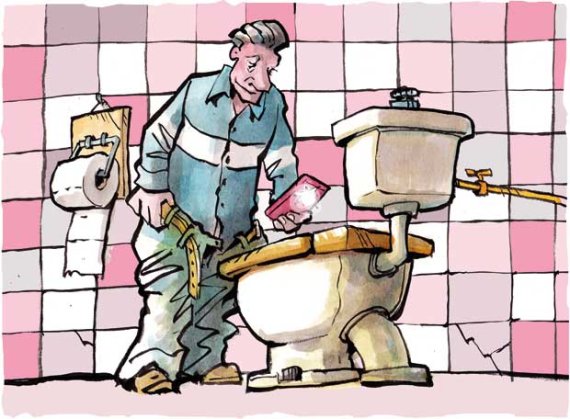Fortunately, I was not the only one for whom it seemed strange. My Spanish friend noticed it too.Why would the shape of the toilet be different in France and Spain compared to the Netherlands? The investigation was on its way. However, it proved difficult to introduce this topic when chatting with Dutch colleagues, so looking for information in order to solve our initial question was not that easy. As scientists, after hours – not to say weeks – of literature reading and brainstorming we successfully made a list of several pros and cons.
The Dutch design is water saving and silent, which is ideal when you are surrounded by people. And it saves you from being splashed. However, like every invention, it turned out to have drawbacks as well. The flat flush toilet requires more effort to clean and without a complete immersion the smell easily spreads throughout the whole room. Finally, we found out another reason which matches quite well with the preventive behaviour typical of the Dutch population: the flat flush toilet is designed for the owner to examine his or her faecal matter in order to perform a health check. Wow. Not sure we will start investigating whether or not we are sick through this self-diagnosis tool but we are glad to have gotten to the bottom of this issue.
Jonathan Nicolas from France and Ignacio Miro-Estruch from Spain, PhD students at the Division of Toxicology
De pot op
De vorm van een Nederlandse toiletpot is opmerkelijk, vinden Jonathan en Ignacio. Een plateautje voor je grote boodschap, wat is daar de functie van? De twee gingen op onderzoek uit, maar dit onderwerp bespreken met collega’s bleek lastig. Zelf bedachten ze de volgende voordelen: het bespaart water, en je kunt je behoefte in stilte doen. Geen spetters aan je lijf. Maar er zijn ook nadelen. Het is moeilijker schoonmaken, en het riekt.Uiteindelijk bedachten de jongens dat de eigenaar zijn product goed kan onderzoeken, om te kijken of hij niet ziek is. Een gebruik dat ze waarschijnlijk niet over zullen nemen.

